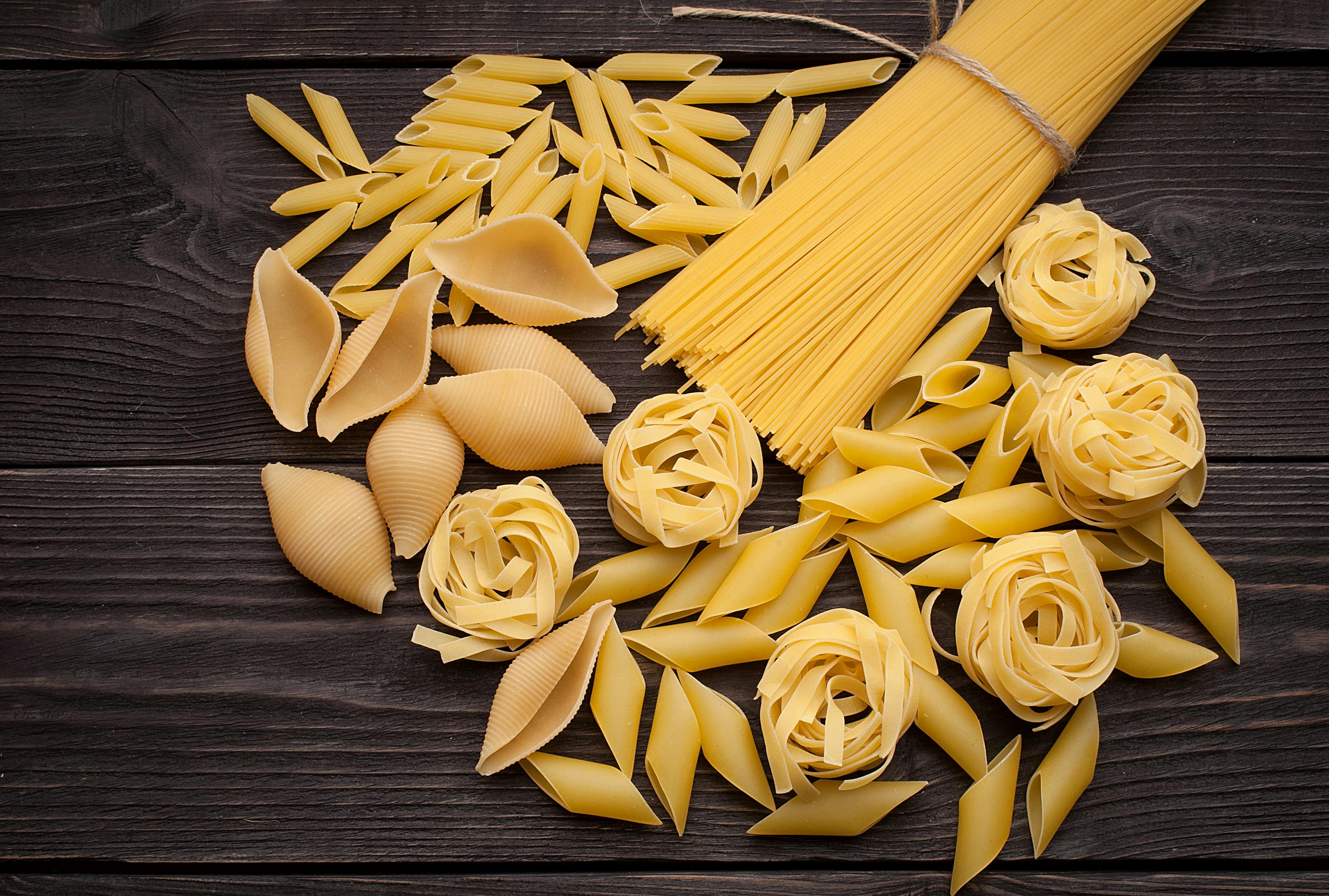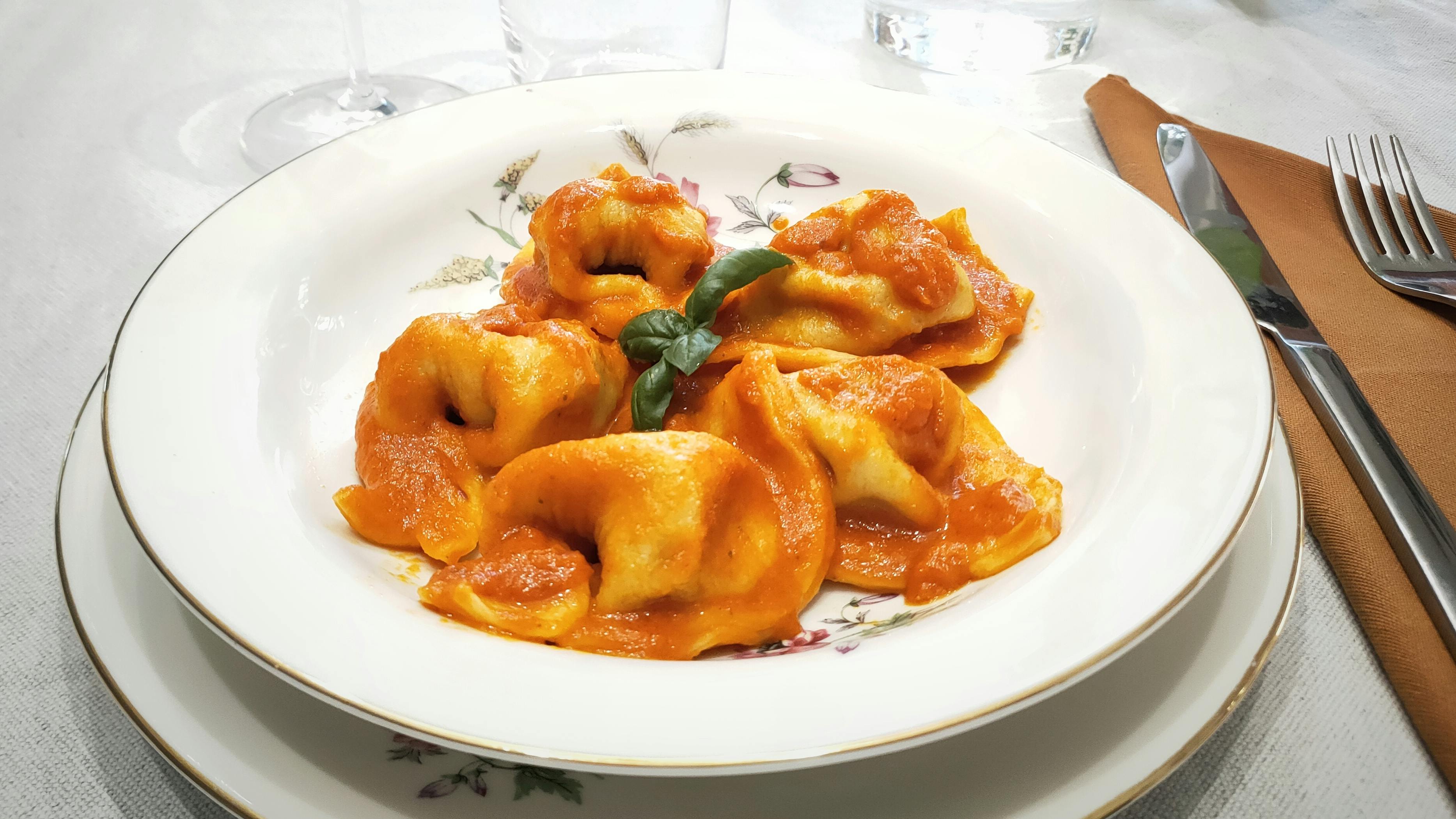

Carb lovers of the world, unite!
October 25 is a date to mark on your calendar: it’s the 26th World Pasta Day. Long, short, with eggs, without eggs, dried, stuffed: the ways to enjoy the quintessential symbol of Made in Italy are virtually endless, considering that Italy alone produces about 300 different types of pasta. To celebrate this day properly, we propose a recipe for a stuffed pasta with autumn flavors: pumpkin tortelli from our Cesarina Chiara in Reggiolo.

“Pumpkin tortelli are among the most typical dishes of the Po Valley. Although influenced by Mantua, it is one of the traditional recipes of the small towns along the Po River, between the provinces of Reggio Emilia and Mantua, between Emilia and Lombardy. Families continue the tradition of tortelli stuffed with pumpkin, dressed with a tomato sauce and the typical soffritto, and they are typical of the autumn season”.

Pumpkin Tortelli
Typical autumn dish, symbol of Po Valley cuisine
Ingredients
- For the egg pasta:
- 3 eggs
- 300 g of flour 0
For the filling:- 400 g of Mantuan pumpkin
- 80 g of amaretti
- 80 g of grated Parmesan
- Nutmeg
- Salt
For the sauce:- 250 g of tomato puree
- 1 small onion
- 40 g of butter
- Salt, pepper
Method
For the filling:
- Clean and slice the pumpkin, removing seeds and strings.
- Bake the pumpkin in the oven at 200 degrees Celsius for about 30-40 minutes, covered with aluminum foil (to prevent the edges from drying out). Alternatively, you can steam the pumpkin, but baking it keeps it firmer and intensifies the flavor.
- Once the pumpkin is soft, remove it from the oven and let it cool. Once cool, remove the skin and mash the flesh with a fork.
- Add finely grated Parmesan, crumbled amaretti, nutmeg to taste, and a pinch of salt (if you like, you can add a couple of finely chopped pieces of pear or apple mustard, a variation typically found in Mantua).
- Mix the ingredients to form the filling.
For the pasta:
- Prepare the pasta by combining the eggs and flour.
- Knead the dough until you achieve a smooth and elastic consistency, cover it with plastic wrap, and let it rest for about an hour (if you need more information on how to make the dough, you can read this article).
- Roll out the pasta by hand with a rolling pin or using a pasta machine.
- Cut out squares of pasta about 7x7 cm with a pastry cutter.
- Add a teaspoon of filling to each square.
- Fold the pasta into a triangle and cross the edges to create the typical hat shape.
- Cook in plenty of salted water for about 7 minutes.
- Drain and dress with the prepared tomato sauce.
For the sauce:
- Sauté the onion in butter, add the tomato puree, and let it cook for 15 minutes.
- Serve with a sprinkle of Parmesan to taste.
Pasta in our daily diet
It will surprise no one to say that Italians are the world's biggest consumers of pasta, with around 23 kg per capita consumed each year. But macaroni, spaghetti, and tagliatelle have now conquered the world: in the past 10 years, global consumption has nearly doubled, which is great news since pasta – when eaten in the right quantities – is good for the body and, why not, for the soul as well. World Pasta Day, established in 1998 by the Italian Food Union and IPO, aims to promote and raise awareness about the characteristics of this food, a healthy, sustainable, and versatile product that, contrary to popular belief, is not the number one enemy of those seeking to achieve or maintain their ideal weight. Along with fruits and vegetables, pasta is indeed a cornerstone of the Mediterranean diet, widely considered a model of healthy eating because it provides carbohydrates, minerals, and vitamins while being low in fats and animal proteins.

Between facts and legends: a bit of Pasta history
It is difficult, if not impossible, to pinpoint who invented pasta. But one thing is certain: it wasn't Marco Polo who brought it to Europe from China in 1295. Perhaps a clever marketing trick, this story first appeared in 1929 in the Macaroni Journal, the magazine of the American pasta manufacturers' association, and it stuck, even making its way into a scene from the 1938 movie The Adventures of Marco Polo with Gary Cooper.

While not even Sherlock Holmes could identify the inventor of pasta in the strictest sense, documents and archaeological findings allow us to state with certainty that this food was already known to the Greeks and Romans. Of course, we shouldn’t imagine banquets featuring plates full of macaroni or spaghetti (for those with tomato sauce, we would have to wait until 1837): ancient pasta was very different from today’s and could even take up to an hour to cook. According to Horace's writings and De Re Coquinaria by Apicius, a type of pasta called “lagana” was common in ancient Rome, enjoyed by the great orator Cicero as well. It consisted of layered strips of pasta, usually served with vegetables. You might also notice a resemblance between “lagana” and “lasagna”, right?

After the fall of the Roman Empire, pasta seemed to fall into oblivion, likely due to the agricultural crisis of the period, which reduced wheat production and made pasta a luxury reserved for the very few. It would not be until the 9th century that pasta made its way back to the table, thanks to the Arabs, who helped spread dried pasta – more easily stored – across the Mediterranean.

In Sicily, in particular, pasta found fertile ground, and a real industry developed, so much so that by the 12th century, ships laden with pasta regularly set sail from the island to southern Italy, Sardinia, and southern France. However, until the late 1500s, pasta was still not found on the tables of the poor because it was too expensive; it was only from the 1600s onwards, with a decrease in production costs and, consequently, prices, that its consumption spread across various social classes.
Beyond the Plate
Pasta is no longer just food; it has left the kitchen to become a true iconic object, earning itself a museum entirely dedicated to it and, in 2010, being recognized as part of the intangible cultural heritage of humanity.
As early as the mid-1600s, pasta was featured in various works, such as The Macaroni Eater by painter Mathias Stom, which depicts a man enthusiastically eating pasta with his hands. In more recent times, it has inspired world-renowned designers like Philippe Starck, who in 1984 created his very own macaroni with “wings” of double thickness because “Americans and French tend to overcook it”, and Mauro Olivieri, who won an Honorable Mention at the 23rd edition of the Compasso d'Oro award for his Campotti – a pasta shape similar to Calamarata, but pinched in the middle to resemble the number eight.

Pasta has also made its mark in cinema, becoming the star of cult scenes: who could forget the spaghetti feast in Miseria e nobiltà with Totò, or the showdown between macaroni and Nando, played by Alberto Sordi, in An American in Rome with the famous line, “Maccarone, you've provoked me, and I will destroy you”.

The Spaghetti Tree
It's probably the most legendary hoax of all time. England, April 1, 1957: millions of viewers watch the incredible footage of a cheerful Swiss family picking strands of spaghetti from trees as if they were bunches of grapes.
The mastermind behind this formidable prank was none other than the BBC. Thanks to the fact that spaghetti was not widely known in England at the time and the voiceover of the fake documentary was provided by the highly credible presenter Richard Dimbleby, many Britons fell for the prank and flooded the Panorama program's switchboard with inquiries about how to cultivate this sensational “spaghetti tree”.
Decades later, CNN would call the hoax “the biggest hoax that any reputable news establishment ever pulled”.